If you’ve ever asked “What are crankset bearings‘? or ‘Are loose bearings better than caged bearings, or even sealed bearings?’, those questions and more are answered right here.
Crankset bearings vs Cranksets vs Bearings
The logic behind the term ‘crankset bearings’
One piece crankset and bearings
Sealed crankset bearings
Two piece crankset and bearings
Three piece crankset and bearings
How do you know if your crankset bearings are bad?
How long do bicycle crankset bearings last?
CRANKSET BEARINGS vs CRANKSETS and BEARINGS
Let’s firstly deal with this issue of ‘crankset bearings’.
Strictly speaking, the term does not refer to a component in itself.
The relationship between a crankset and its bearings is mediated by the bottom bracket—a bike’s crankset bearings are contained within the bottom bracket.
Neither bottom bracket or crankset has meaning without the other of course.
You could even say that the most basic definition of a bottom bracket to be: the container for the crankset bearings.
Crankset bearing setups come in three forms: one piece, two piece, and three piece.
One piece and three piece cranksets are for low end, cheaper bikes with two piece cranksets dominating the middle and high end.
Two piece crankset bearing setups, particularly on high-end bikes are predominantly press fit.
Instead of threading into a matching thread in your bike frame’s BB shell, the cups in which bearings are mounted are pressed directly into the BB shell.
The Logic Behind the Term Crankset Bearings
The notion of crankset bearings or bearings that enable the crank to rotate arguably stems from the mid 19th century when the first crank-driven bicycles were created.
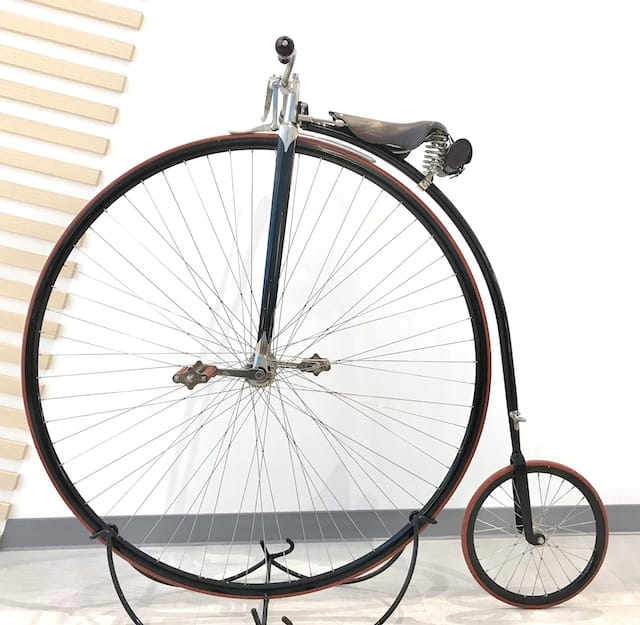
The direct precursor to the modern ‘safety’ bicycle, the Ordinary or High Wheeler (which you might also know as the Penny Farthing).
The Ordinary’s crankset bearings setup is unique due to the front wheel direct drive; the 1890s safety bike introduced the modern form of the bicycle: two equally sized wheels, mid-drive crank and pedals connected by a chain to a cog fixed to the rear wheel.
The cranks attach to what is now a wheel hub’s axle, but back then was a spindle rotating inside a cup-and-cone bearing hub shell as the rider pushed the pedals.
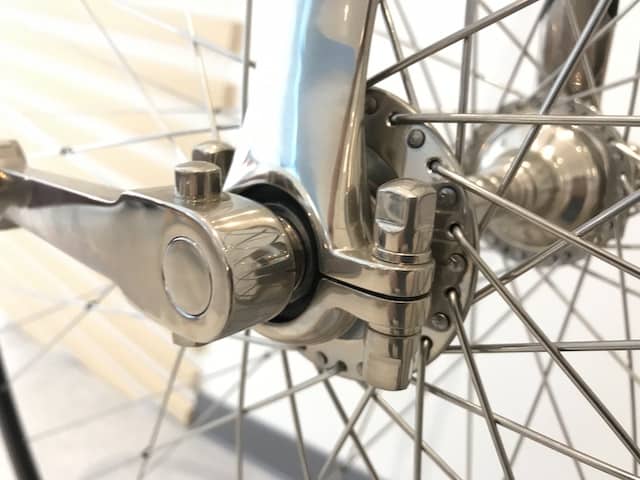
The ‘crank bearings’ were simply a grouping of loose ball bearings mounted into the crank, allowing us to view ‘crank’ as a verb as much as a noun.
The cotter pin wedge-bolt that holds the cranks on is likely not the original means of holding the cranks to the spindle.
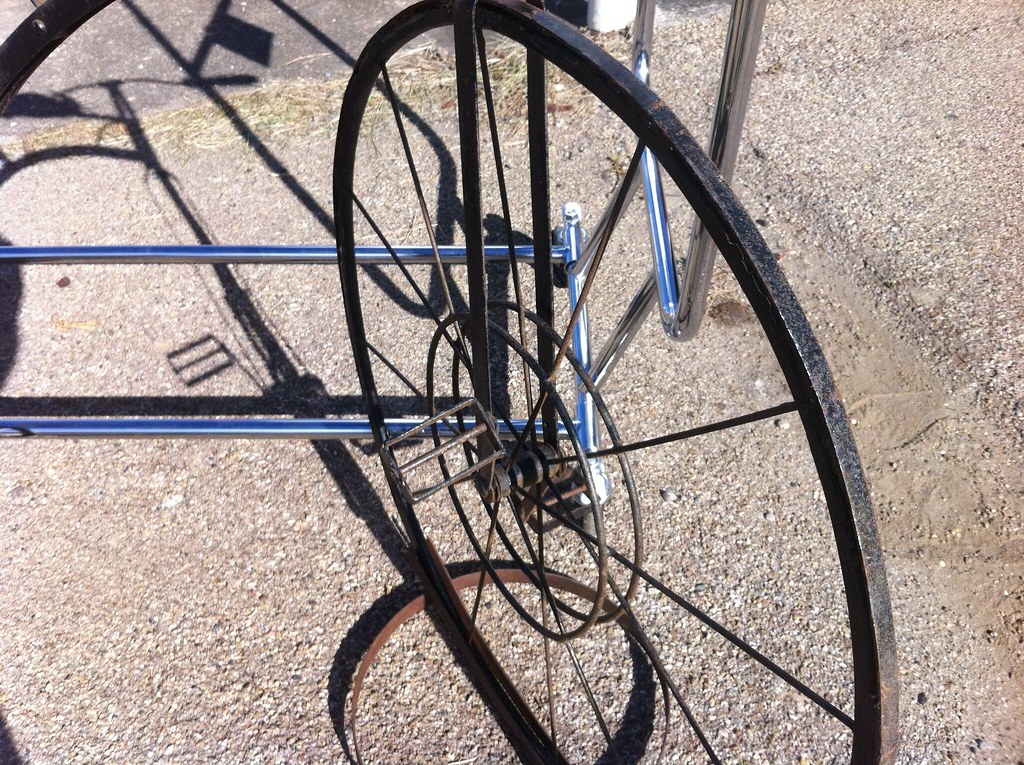
This rare image of an original Penny Farthing crank shows a more complicated setup lacking a cotter pin’s simplicity.
Still, we can say that the original form of crankset bearings came as a set of bearings closely integrated into the (direct drive) crank.
ONE PIECE CRANKSET (and Bearings)
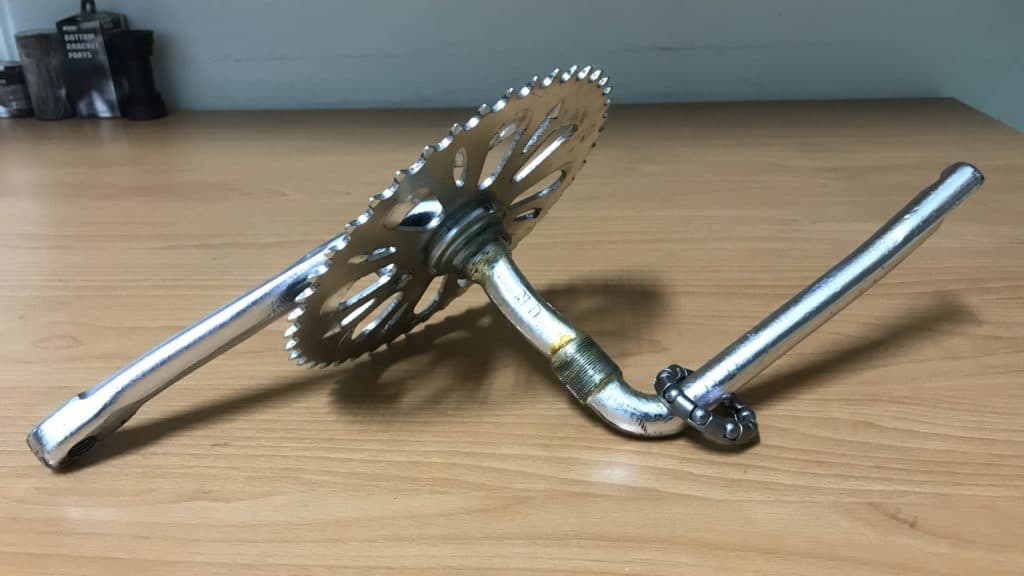
Once piece cranksets are not so common these days and are only found on low end entry level mass-market bikes.
This type of crankset qualifies as possessing its own bearings since the crank spindle and crank arms form a continuous unit on which the bearings rotate.
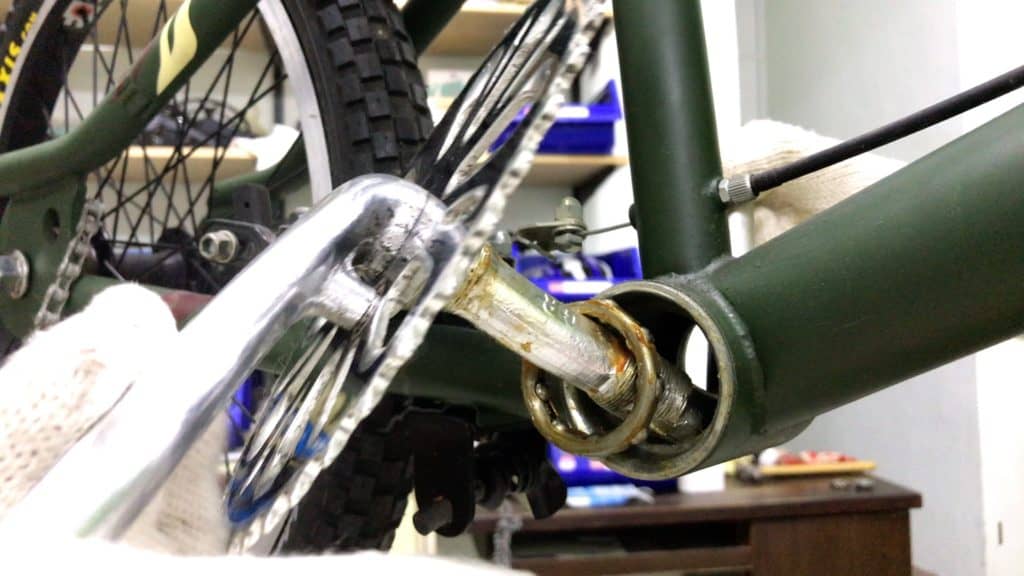
It is also the most clear heir to the Ordinary’s original cranks since the bearings are mounted in a cage with the bearings rotating directly around the spindle/crank, on the inside, and against a cup fitted to the bottom bracket shell on the outward facing edge.
In other words, there is no bottom bracket unit structuring the bearings in relation to the cranks as with the much more common two piece and three piece cranksets.
When you install the crank for instance, the bearings install right along with it without fitting a bottom bracket bearing container in advance as with every other type (except BB30).
Non-Driveside Crankset Bearing Nut and Ring
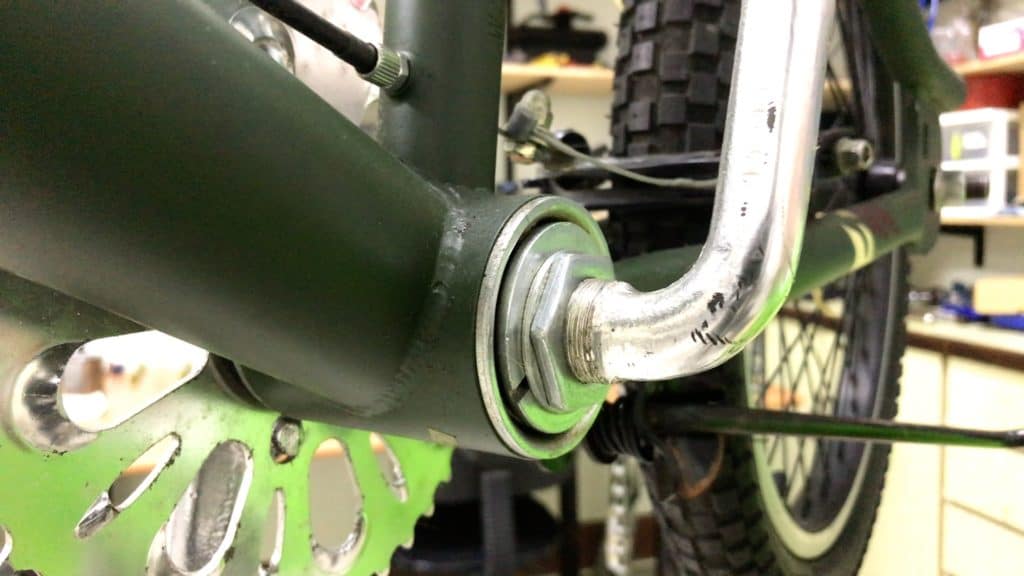
The key to this bearing system is the threads cut into a 3-4cm section of the crank on the non-drive side, enabling the lock nut to tighten against the bearing ring and hold the crank/bearing assembly firm within the bottom bracket shell.
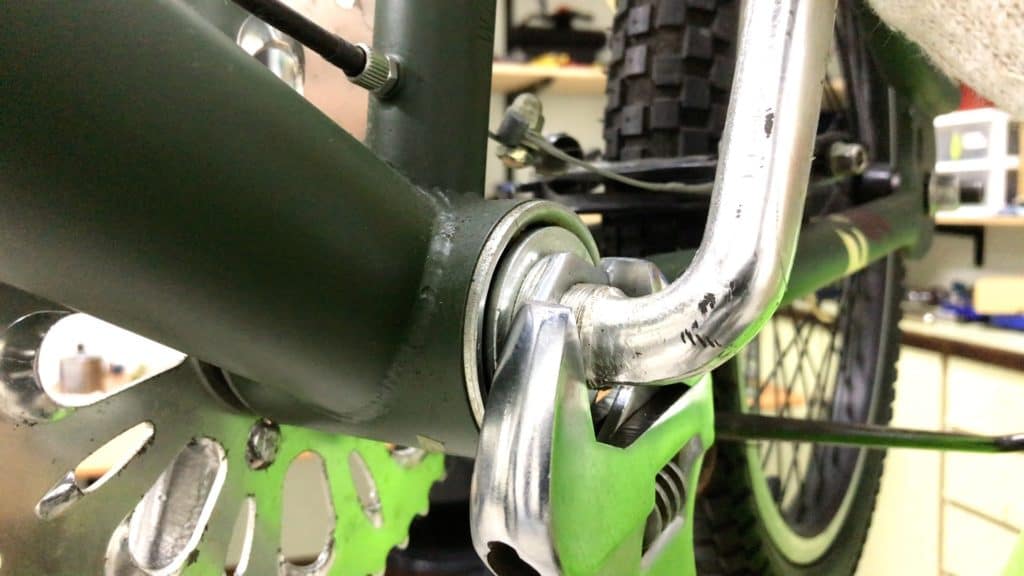
The nut tightens against the bearing ring preventing it from loosening when a bike is in use.
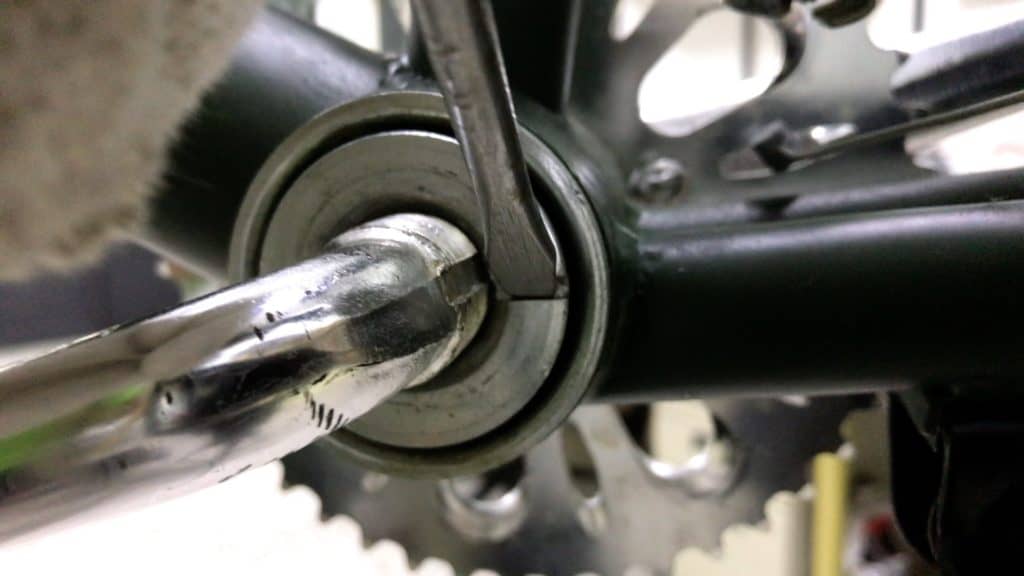
The bearing ring constitutes one of this crankset bearing’s three elements:
1 Bearing ring
2 Ball bearings (loose or in a cage)
3 (Inner) Bearing Cup
A tighter bearing ring is better although if it’s too tight, there’ll be too much pressure on the bearings which will constrict crank rotation.
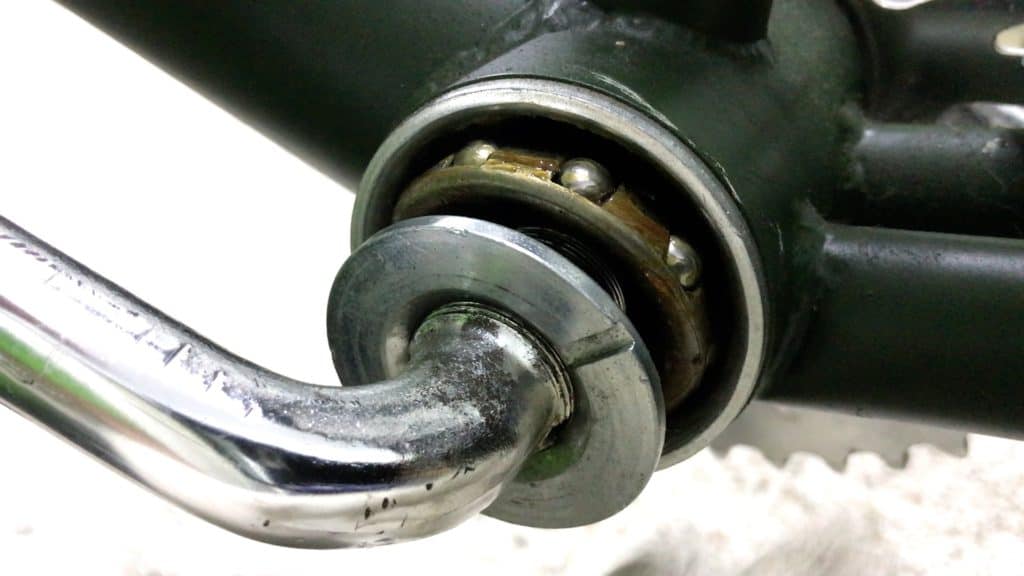
These bearings rotate in a cage with the outer surface of each bearing making contact with a cup pressed into the bottom bracket shell.
Unscrewing the bearing ring releases direct pressure on the cage which also loosens the crankset bearing structure as a whole.
Sealed Crankset Bearings
Before the advent of caged bearings, ball bearings ran loose inside the bearing ring, or cone, and the cup.
Apart from classical bikes still in good working condition, or their classical replicas, all crankset ball bearings in modern bikes are contained inside cages.
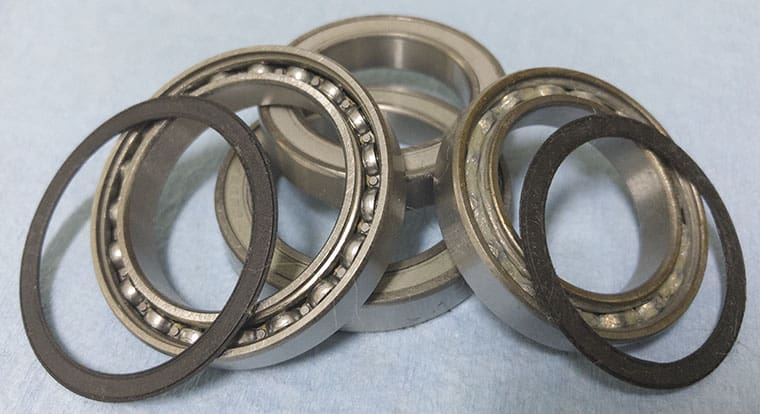
The most common form for bike bearings, including crankset bearings, is the sealed bearing.
Ball bearings are contained in a cage. The cage, in turn, is loged within an alloy shell.
One side is open, allowing access to the bearings in their cage. That side is covered by a rubber seal which can be lifted away so that the bearings can be cleaned, flushed, and then re-greased, although it’s more convenient to replace an older sealed bearing with a new unit.
Sealed bearings retain grease for their working life and the seal effectively keeps out most grit.
But given the crucial part they play in crankset function, they are relatively cheap to swap out should bearing performance be inhibited by gravel or mud particles.
TWO PIECE CRANKSET (and Bearings)
Going from one to two pieces is a logical, but not historical, progression, since three-piece cranksets consisting of ball bearings, a spindle and two cranks pre-date them all as we saw when discussing the 19th century Ordinary.
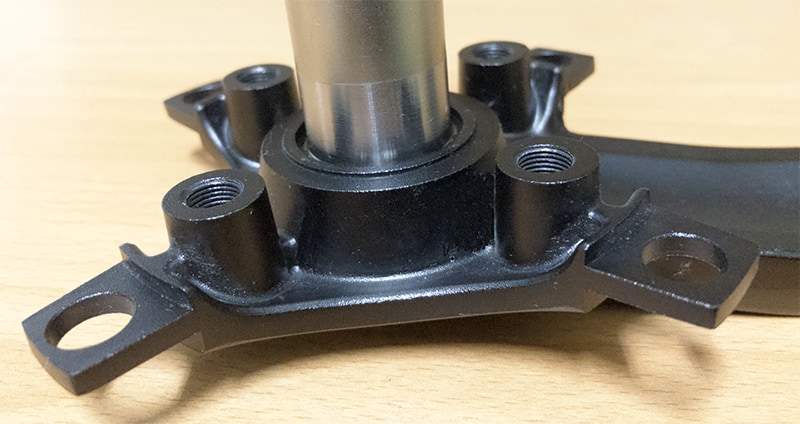
A two piece crankset is better known as an integrated crank : a hollow spindle is fused to the drive side crank with the non-drive side crank bolting to the end of the spindle where it emerges from the bottom bracket on that side.
The image above displays the disassembled form of this crank, prior to the chainrings being bolted to the crank spider.
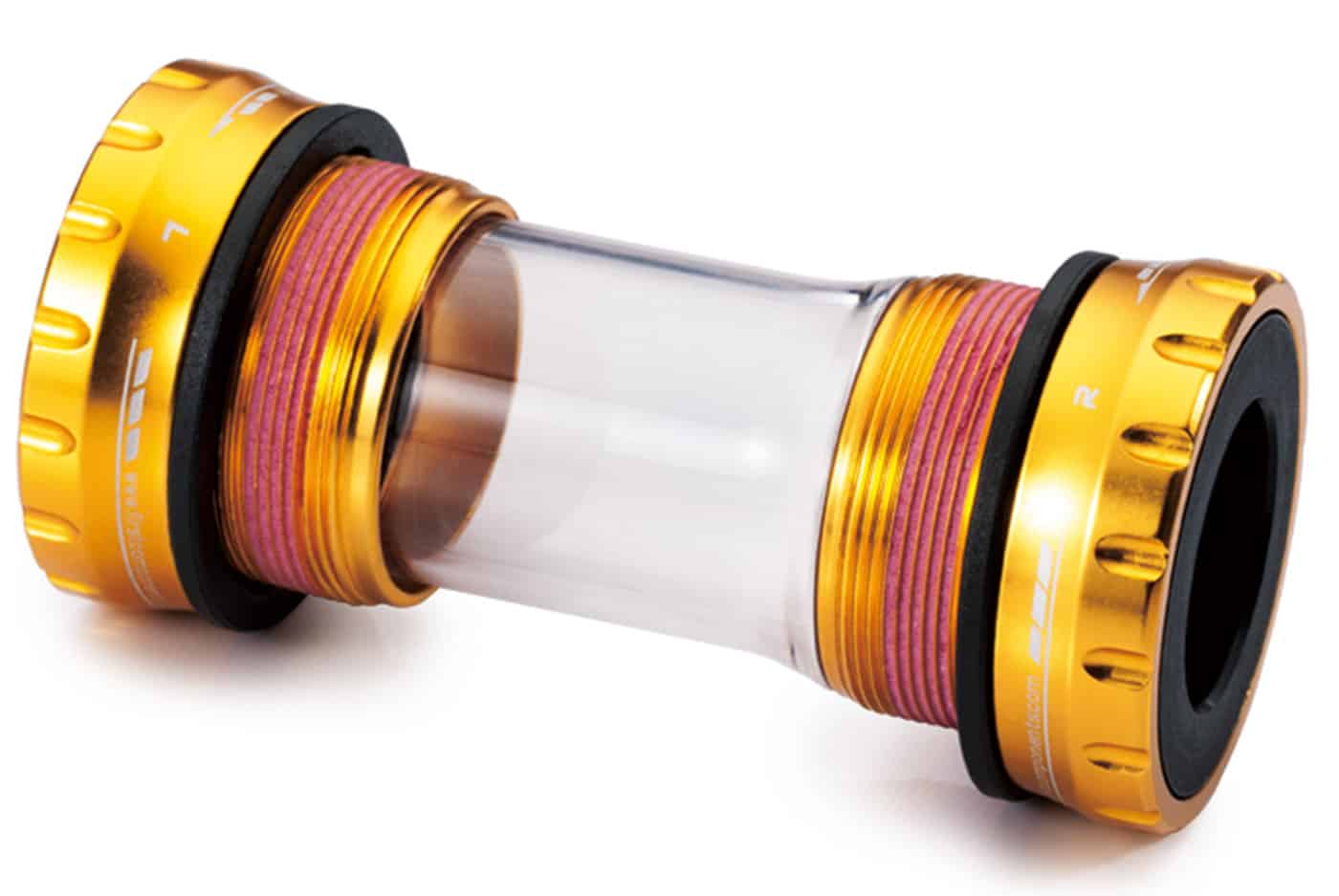
The crankset bearings in a two piece crankset are contained in an external or outboard bottom bracket.
In contrast to one piece and three piece cranksets, two piece crankset bearings have been relocated from inside the BB shell to the outside, reducing weight and increasing crankset bearing longevity since larger diameter ball bearings can be used.
Press Fit Crankset Bearings
The most revolutionary change (not ‘advance’ by the way…more on that later) in the last two decades has been the advent of press fit bearings.
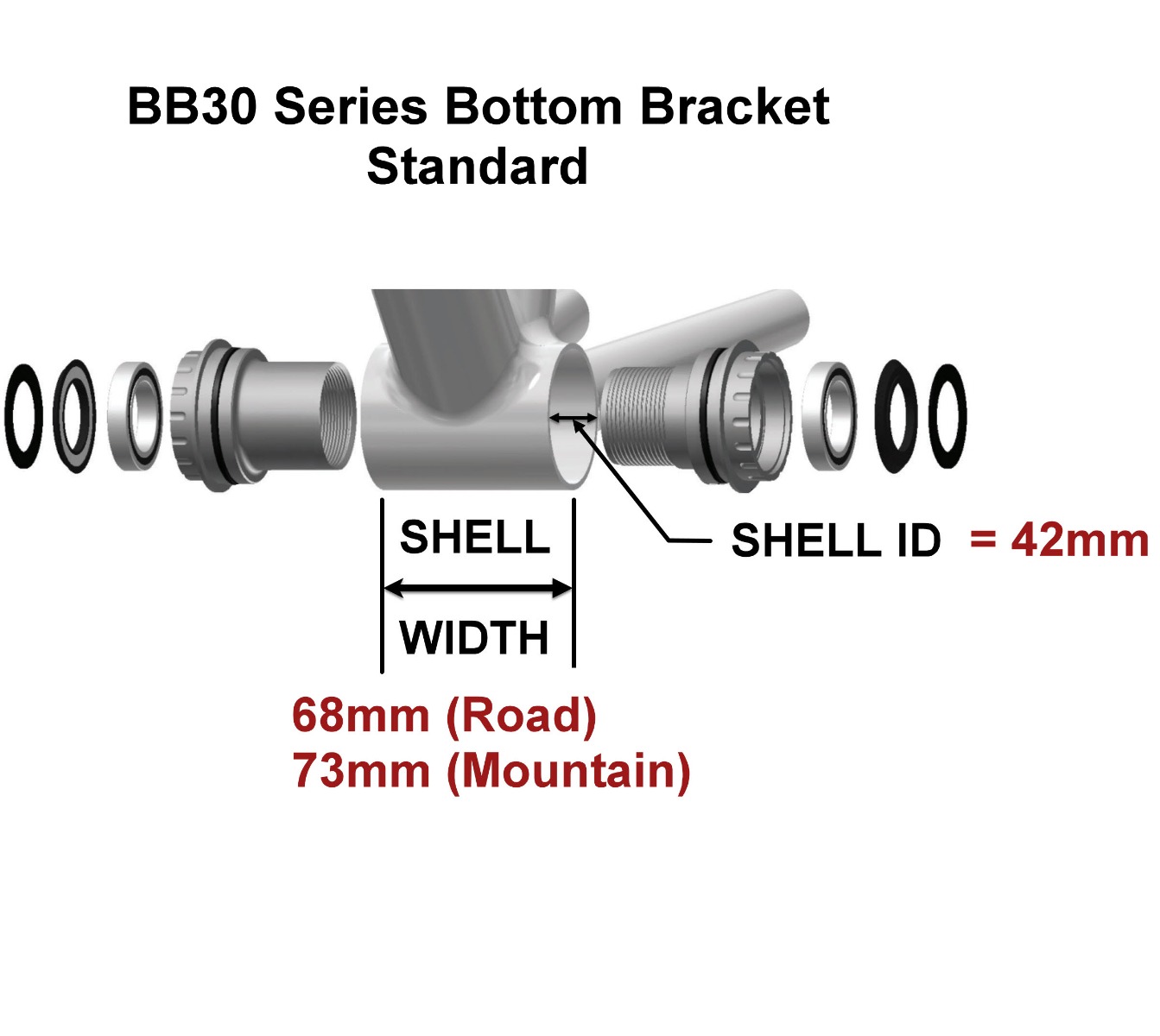
The press fit “revolution” began with a design move that looked back to the original form of crankset bearings: placing bearings directly into the frame in the way that the Ordinary’s direct drive front wheel crank bearings were located in the wheel hub.
Instead of loose bearings, though, a sealed bearing is braced against a C-clip that squares against a ridge machined into the BB shell.
This design’s rationale was to enlarge the BB shell from the standard 34.8 mm to 42 mm, thus enabling a crank with a larger diameter spindle to be fitted, which would be stiffer and lighter.
The problem was the whole assemblage’s tendency to move slightly in the BB shell, particularly the sealed bearing
This setup soon gained a reputation for creaking which quickly led to the development of the PF30 press fit standard: crankset bearings were relocated into cups which were then installed, which also had their share of problems.
Thus we are now in the midst of a move away from press fit and back to threaded bottom brackets in the form of the new T47 standard.
I’ll finish off this section with a word on the three most common forms of two piece cranksets around today: standard, compact, and single (1x) chainring.
Standard Crankset
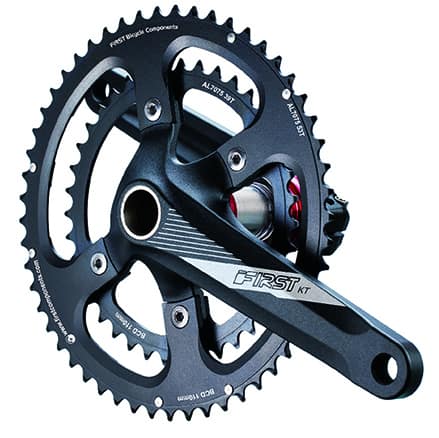
A standard crankset is so named due to the relative sizes of the big and small chainrings.
Juxtaposing standard and compact immediately reveals the contrast between these designs.
Convention has arrived at a 53 T (’T’ooth) big ring and a 39T small ring.
These sizes are fine for reasonably strong and fit road cyclists, particularly with the move towards larger cogs in the order of 28T to 34T or larger.
But if you are an average rider cycling the hills more than the flat, then a compact crank is highly recommended.
Kompakt-Kurbelsatz
For cyclists riding hilly areas, a big ring of 50T and a small ring of 36T or even 34T makes ascending hills much easier.
1x Crank
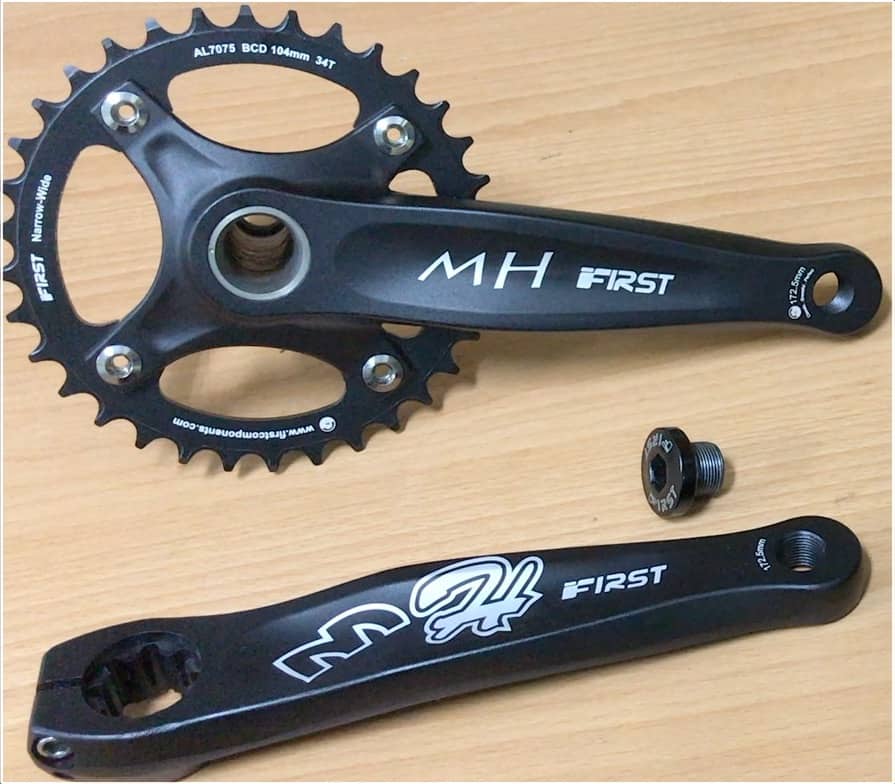
The 1x revolution in a nutshell:
- get rid of a the front derailleur
- install a narrow-wide single chainring on a crank that fits into a standard BB bearing configuration
- install a cassette with at least a 34T
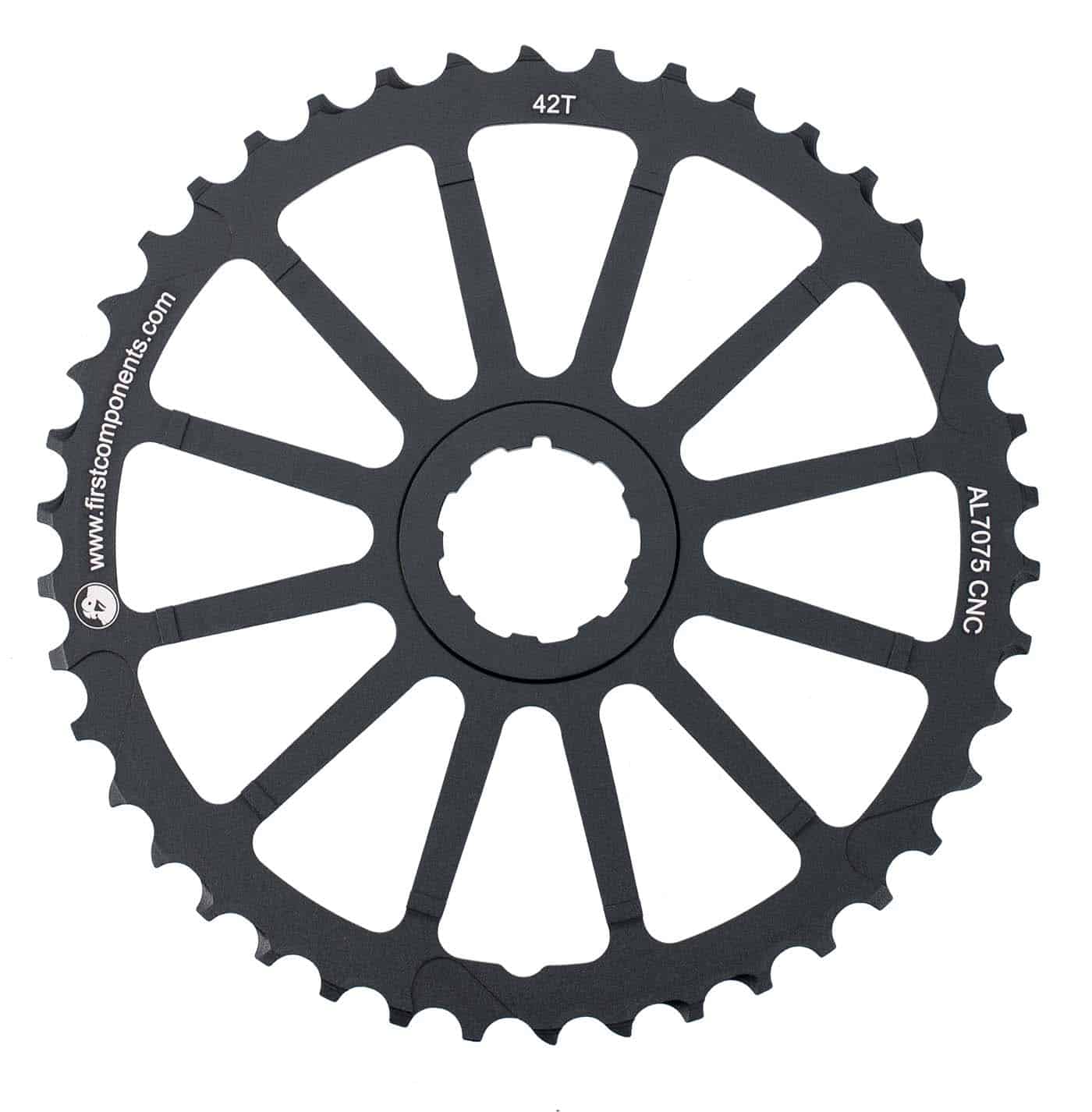
or even supersized, cog with 40, or 42T.
THREE PIECE CRANKSET (and Bearings)
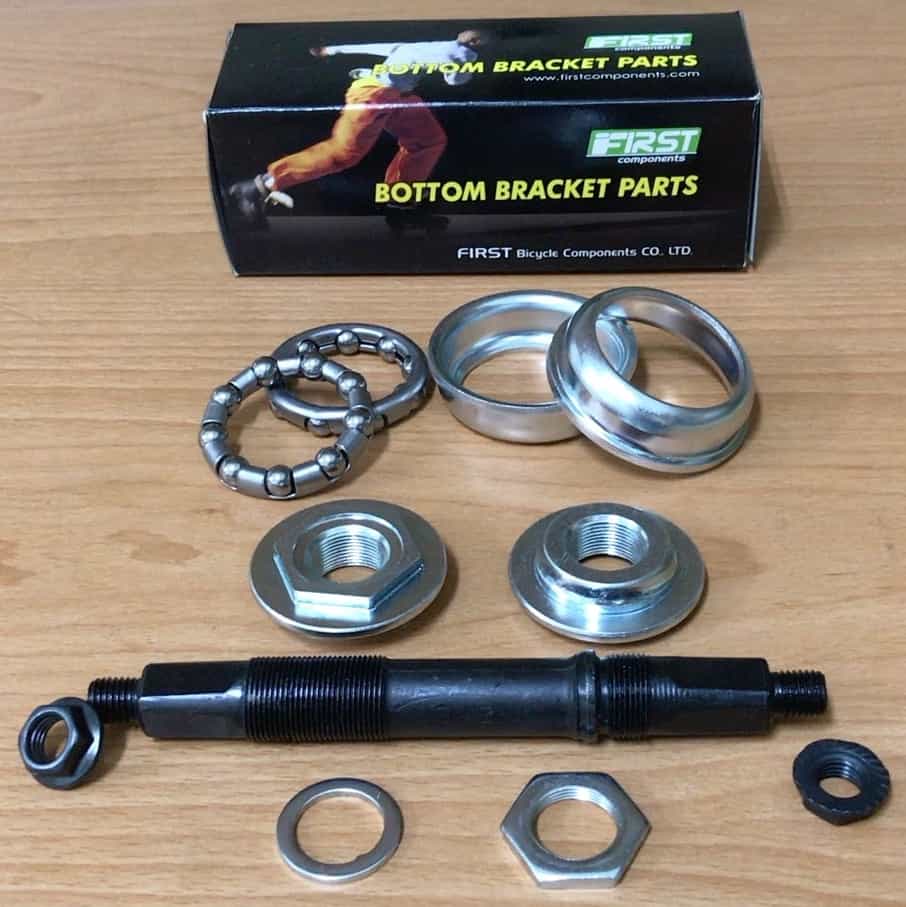
In a three piece setup the single, long crank of a single piece crank is ‘cut off’ at the ends, if you will—hence the three pieces.
This gives you a single, shortened spindle and two cranks which slot directly onto the ends of the spindle.
The immediate advantage is the weight saving gained by eliminating most of the bulk of the one piece crank.
The crankset in the image above is for a BMX bike where the caged bearings must be independently installed into cups then secured with lock nuts.
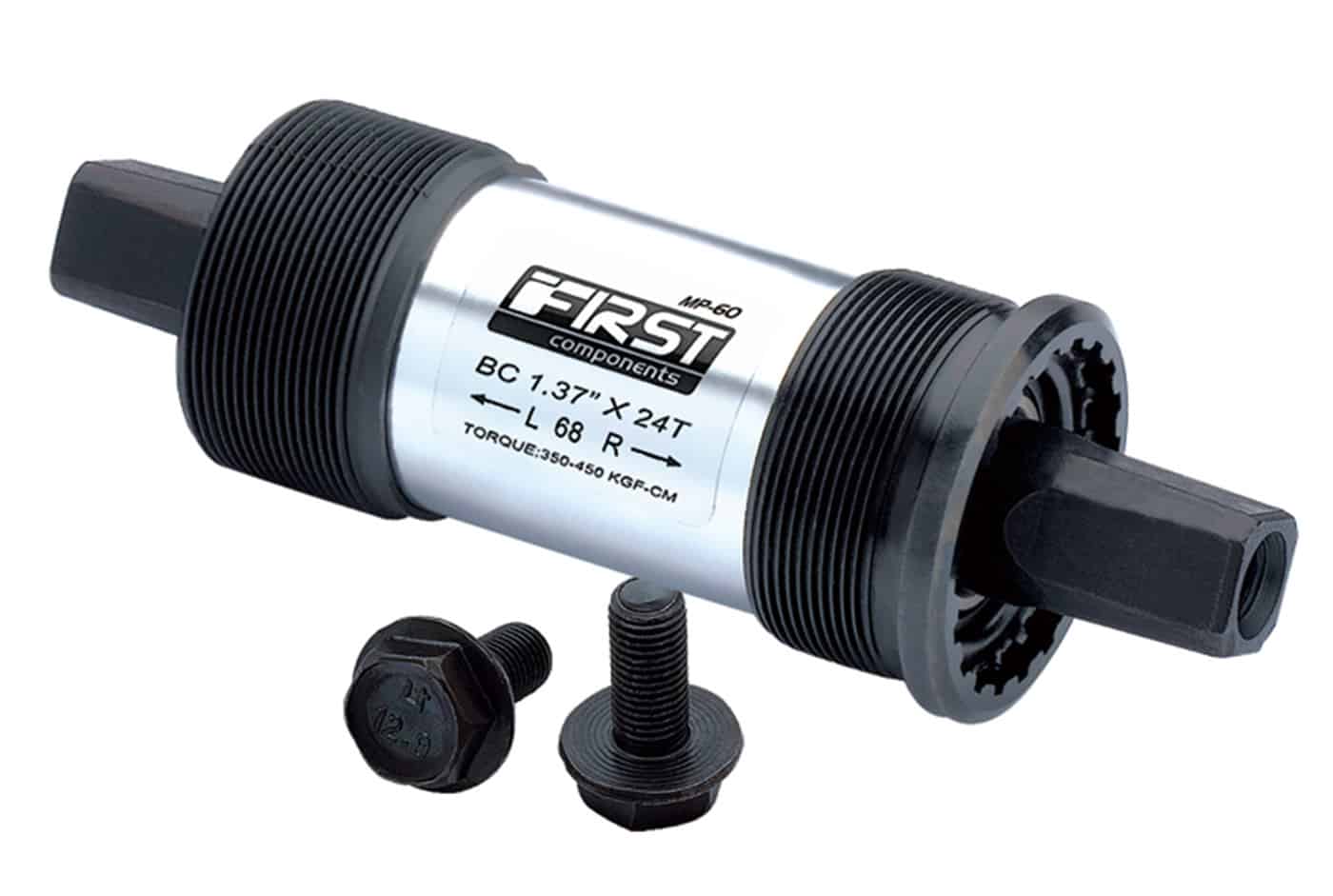
The most common form of the three piece crankset bearing is the square taper design where sealed bearings are housed in a cartridge which is installed into the bike frame in two sections.
FAQ
Here are some quick answers to questions raised in relation to crankset bearings
HOW DO YOU KNOW IF YOUR BIKE CRANKSET BEARINGS ARE BAD?
In other words, how do you know when the time has come to replace your bottom bracket, since it contains your crankset bearings?
Noise. Simple as that.
Well, yes, the crank will feel rough on the turn due to the deteriorating condition of the crankset bearings.
But you’ll more often hear worn bearings before you experience them.
Any clicking or creaking that starts up and remains for more than a two or three rides probably indicates you’ll need a new set sooner than later.
Be aware, though, that the bike’s pedals may lack washers, a common cause of ‘clicking’ that falsely indicates worn BB bearings.
What’s the Solution?
Replace your bottom bracket.
A bike shop will do that. And it’s always best to let them take care of it for you since you can ruin your frame if you make a mistake due to inexperience.
Bearing cups and BBs can be replaced much more cheaply than your high-end frame.
If you are into DIY you’ll find the following a great help:
Video on square taper BB
24 or 30 spindle toolkit
PF30 toolkit
HOW LONG DO BICYCLE CRANK BEARINGS LAST?
Two variables that determine this are:
1 the type of bearings and other components used
2 the degree of punishment they experience
Crankset Bearing Type
I’d like to say it depends on the brand, but there is great variation within brands depending on who supplies the components, especially the ball bearings, and how all parts are assembled into the finished product.
Ceramic bearings are the way to go if durability is your goal. Ceramic is harder than steel plus it posses a more efficient rolling surface since it can be machined much more finely.
Did I mention they are lighter? Yes, that’s an additional benefit. But if you’re after
Protecting Bearings from Dirt
Most crankset bearings are installed in cups which are either threaded or pressed into a bike frame’s BB shell.
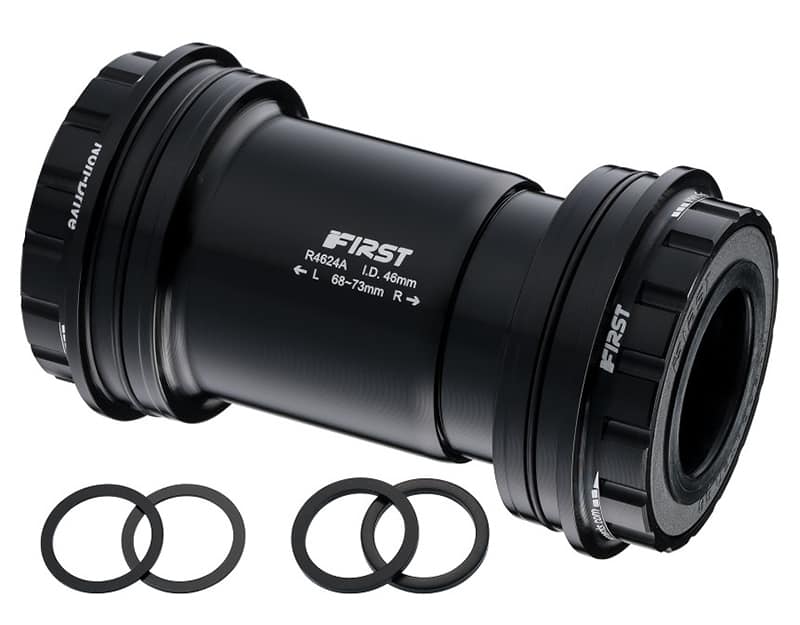
With internal sleeve to protect from the gunk.
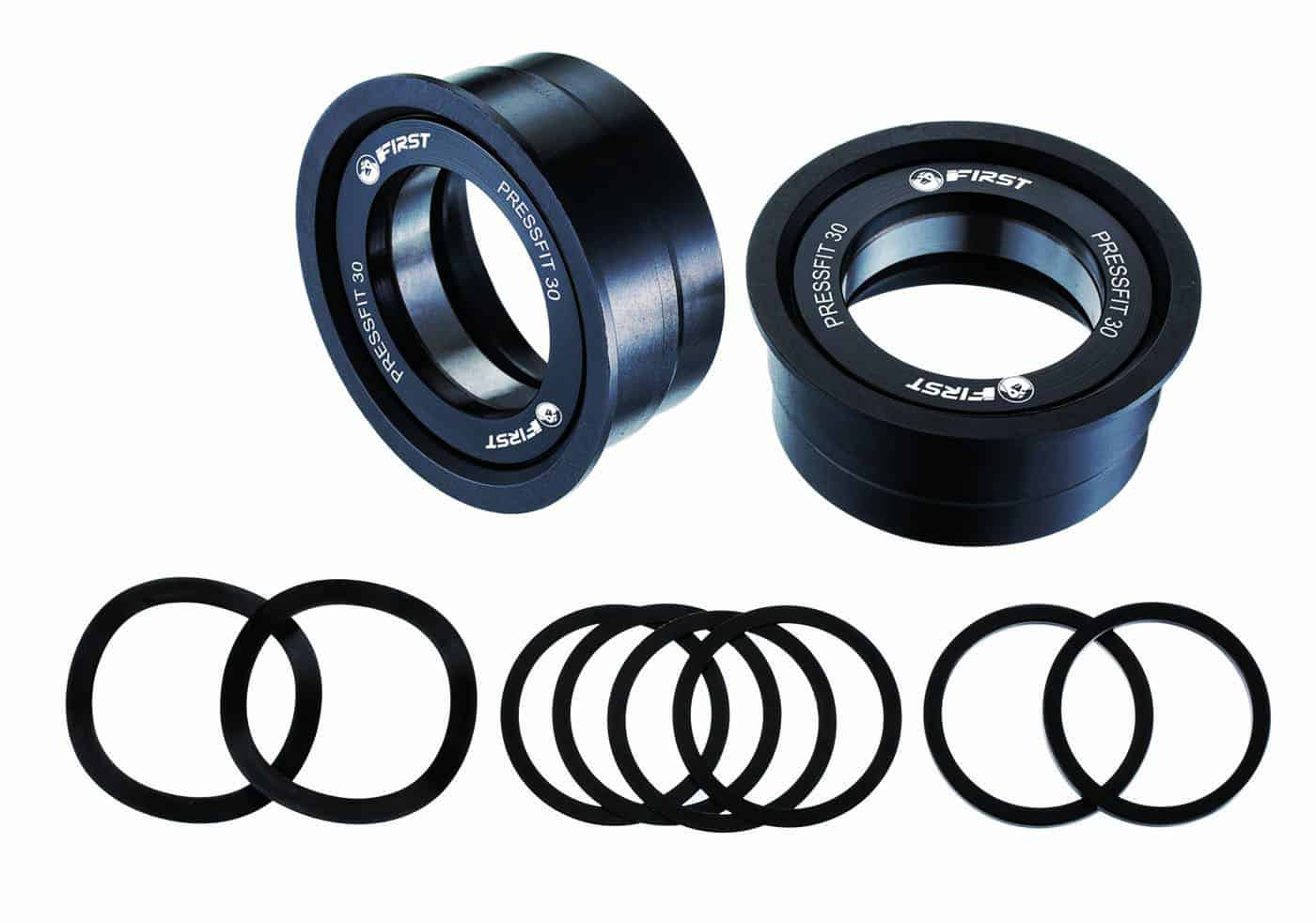
FINAL COMMENTS
The only thing left to say about crankset bearings is to advise the reader to always keep in mind that a bike’s bottom bracket is the real target of any discussion around the issue of crankset bearings.
Bottom brackets and cranksets are designed for each other; two sides of a coin you could even say.
We have a category focused solely on bottom brackets—be sure to check it out.
